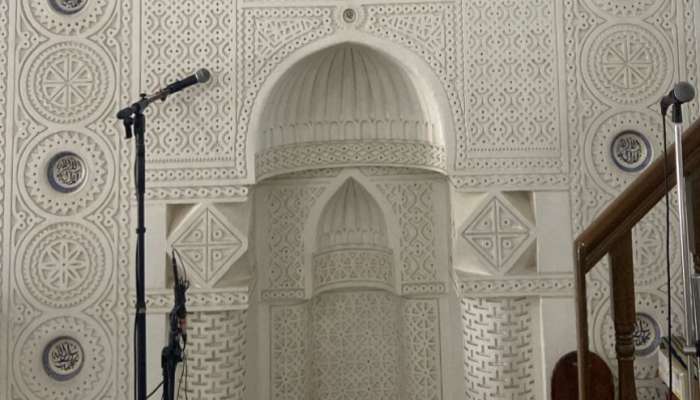
Muscat: Al Alya Mosque in the Wilayat of Rustaq, South Al Batinah Governorate, is one of the most prominent religious and historical landmarks in the Sultanate of Oman. Its spiritual, scientific, and architectural value reflects the depth of the Islamic cultural heritage for which the Wilayat has been known for centuries.
The mosque's construction dates back to the reign of Imam Nasser bin Murshid Al Ya'arubi in the seventeenth century AD.
The mosque is located in the heart of Al Alya village, approximately 800 meters from Rustaq Fort. Its central location serves the residents of Al Alya for prayers and social gatherings. It was built on land approximately 6 meters above the falaj channel and is surrounded by various orchards, some of which are endowments, such as the "Furod" orchard in the south and the "Jahal" orchard in the east, reflecting the mosque's economic and social importance in its surroundings.
Engineer Ahmed bin Saif bin Khamis Al Mazrouei, one of the administrators of the Al Alya Mosque endowment in Rustaq, explained that the mosque has significant endowment assets, most notably 47 water features in the Al Maysar Falaj, estimated to be worth approximately OMR 94,000 , in addition to orchards containing more than 553 palm trees and prayer niches, estimated to be worth approximately OMR 166,000 .
Al Mazrouei added that the mosque was previously used to distribute zakat and food supplies to the village's beneficiaries on occasions such as Eid al-Fitr and Eid al-Adha. It was also a venue for weddings and funerals until recently, before being moved to the Alaya Sabla.
The mosque hosted meetings of "people of influence" to discuss village affairs. It was also a popular destination for imams and governors, where reconciliation and adjudication sessions were held. A designated area was also designated for providing drinking water via a series of "jahals" (clay containers) filled with water from the Al-Maysar Falaj and hung in their designated places.
Engineer Al Mazrouei emphasised that the mosque was not only a center for prayer, but also a prominent academic and social environment. A number of scholars and sheikhs studied there, most notably Sheikh Suleiman bin Abdullah Al-Luwaihi, embodying its historical role as a pioneering educational and community institution in the Wilayat of Rustaq.
Architecturally, the mosque is 21 meters long and 12 meters wide. It features 10 columns, dividing it into six longitudinal and three transverse lanes. A central hall measuring 4 x 3.5 meters is located below it, previously used for ablution and heating. It is likely that there was a well underneath, connected to a drainage unit that led to the falaj canal.
The mosque's mihrab is two meters wide and four meters high. It features simple, beautiful inscriptions, featuring the Shahada (the two testimonies of faith) written on several levels. The mihrab was widened during recent restorations, adding a distinctive aesthetic touch to the mosque. The mosque used to have three doors: two in the east and one in the north. However, after Friday prayers were approved, a new door was added on the south side for the preacher and people with disabilities to enter. The northern door was closed.
The mosque retains a traditional vertical staircase made of "alalan" wood, measuring 6 meters in length and embedded in the mosque walls. This staircase has remained in place since its construction until today. The mosque also contains a 15-meter-long, 12-meter-wide building that once housed students and a storage room for mosque supplies, as well as a drinking water supply area for worshippers and passersby.